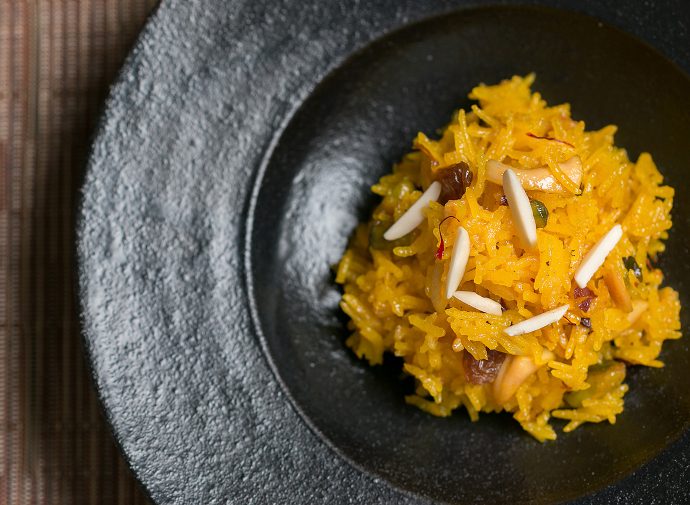This sweet rice dish is often served during Ramadan, as well as to conclude weddings and other traditional celebrations.
Recipe from Jahan Ara, as taught to me by her son, Zak Yasin
Ingredients
1 cup aged basmati rice, Royal brand recommended
3 cups water (this is not a precise measurement, use approximately three times the volume of raw rice)
Aromatics
2 inches of cinnamon bark, broken in half
2 cloves
2 green cardamom pods
1 tsp powdered orange food coloring
3 Tbl ghee or clarified butter
¼ cup raw slivered almonds
¼ cup raw chopped pistachios
¼ cup raw chopped cashews
¾ – 1 cup sugar, to taste
1 Tbl milk
½ tsp saffron threads
¼ tsp cardamom powder
¼ tsp rose water
Optional: 2 Tbl mawa (cooked milk) or heavy cream
Optional: Silver leaf, golden raisins, slivers of dried apricot, candied orange peel
Instructions
Soak saffron threads in 1 Tbl warm milk.
Note: For this dessert you do not want to crush the saffron threads but instead have them appear whole in the rice, demonstrating the hospitality and luxury you offer to your esteemed guests.
Cover the rice with room temperature water and gently stir it with your hand. Drain and repeat several times, until the water runs clear of excess starch. Drain. Cover the rice with fresh water and let it sit for an hour. Drain.
Bring water to boil with 1 piece of cinnamon bark, one clove and one cardamom pod. Add the food coloring to the boiling water, and then add the soaked rice.
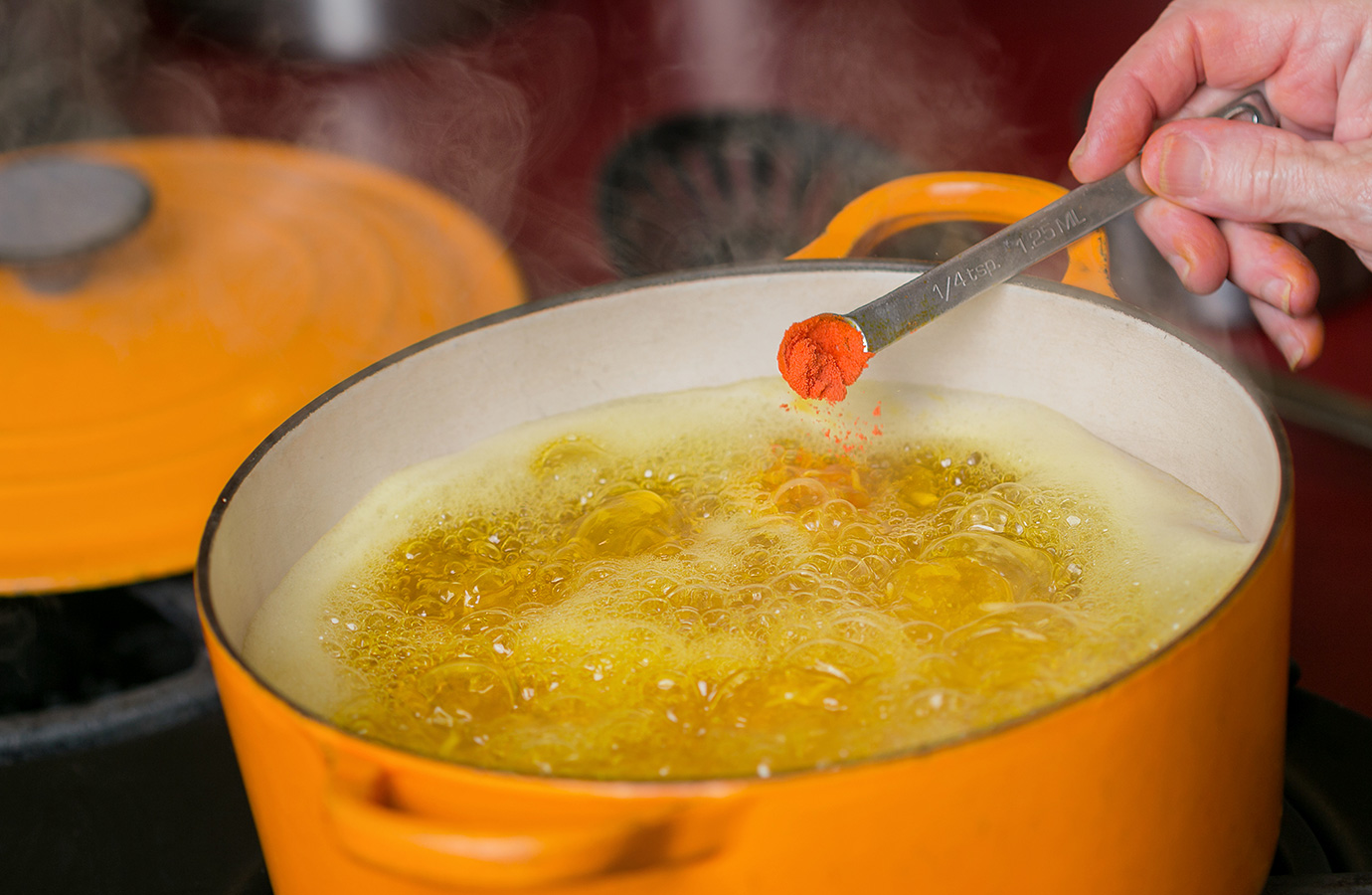
Begin checking the rice after 5 minutes. You want to simmer it until the rice is 75 percent cooked; the grains will be extended but still firm in the center, similar to al dente pasta. Immediately drain the rice. Remove and discard the cinnamon, clove and cardamom.
Heat the ghee or clarified butter and sauté the nuts, reserving some raw nuts to garnish the finished dish.
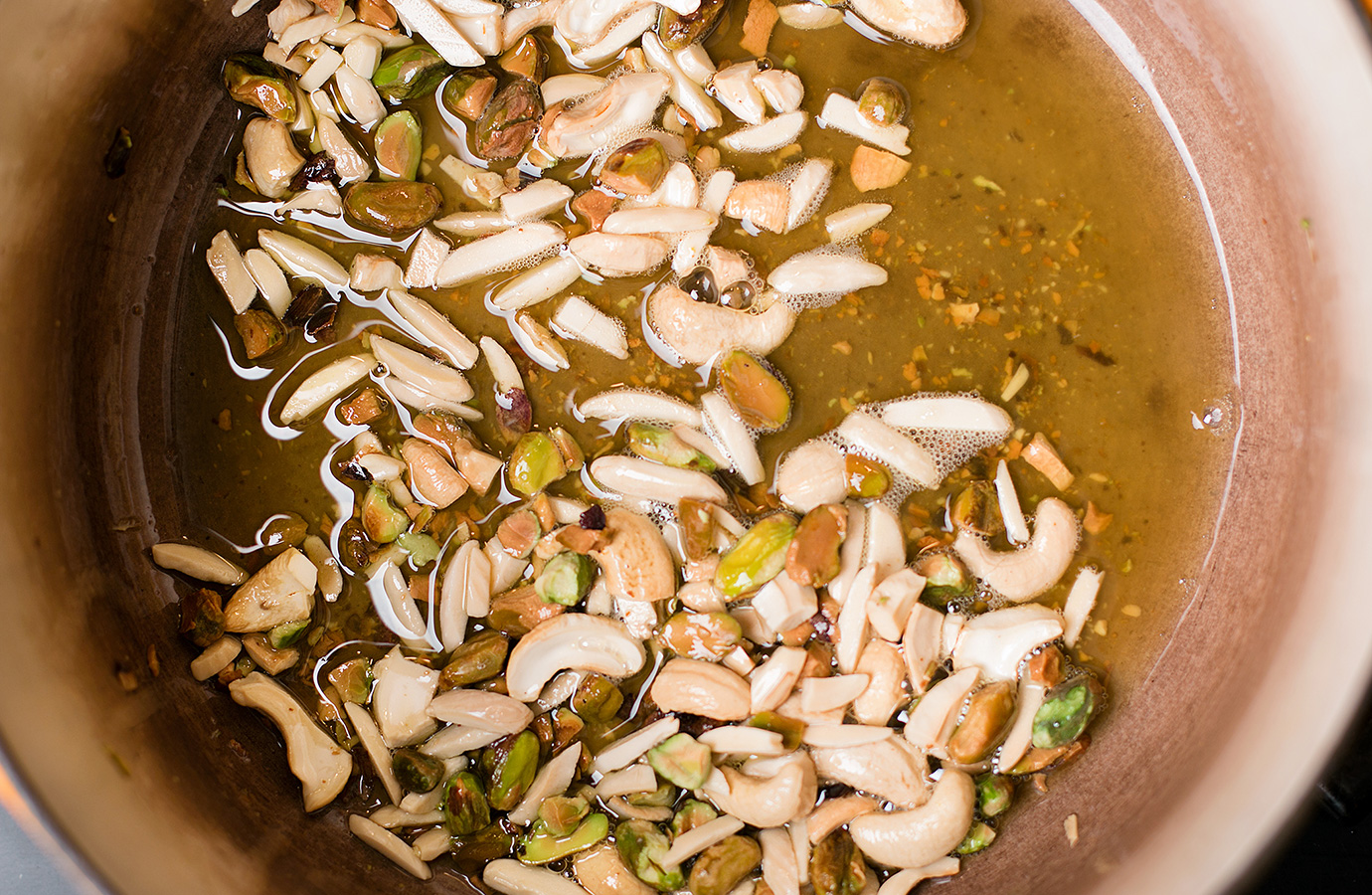
Fold the rice into the nuts. Add another clove, cardamom pod and piece of cinnamon bark. Gently stir in the sugar and close the pan for a few minutes, letting the sugar melt.
Uncover and stir the rice over low heat until the sugar syrup is completely absorbed.
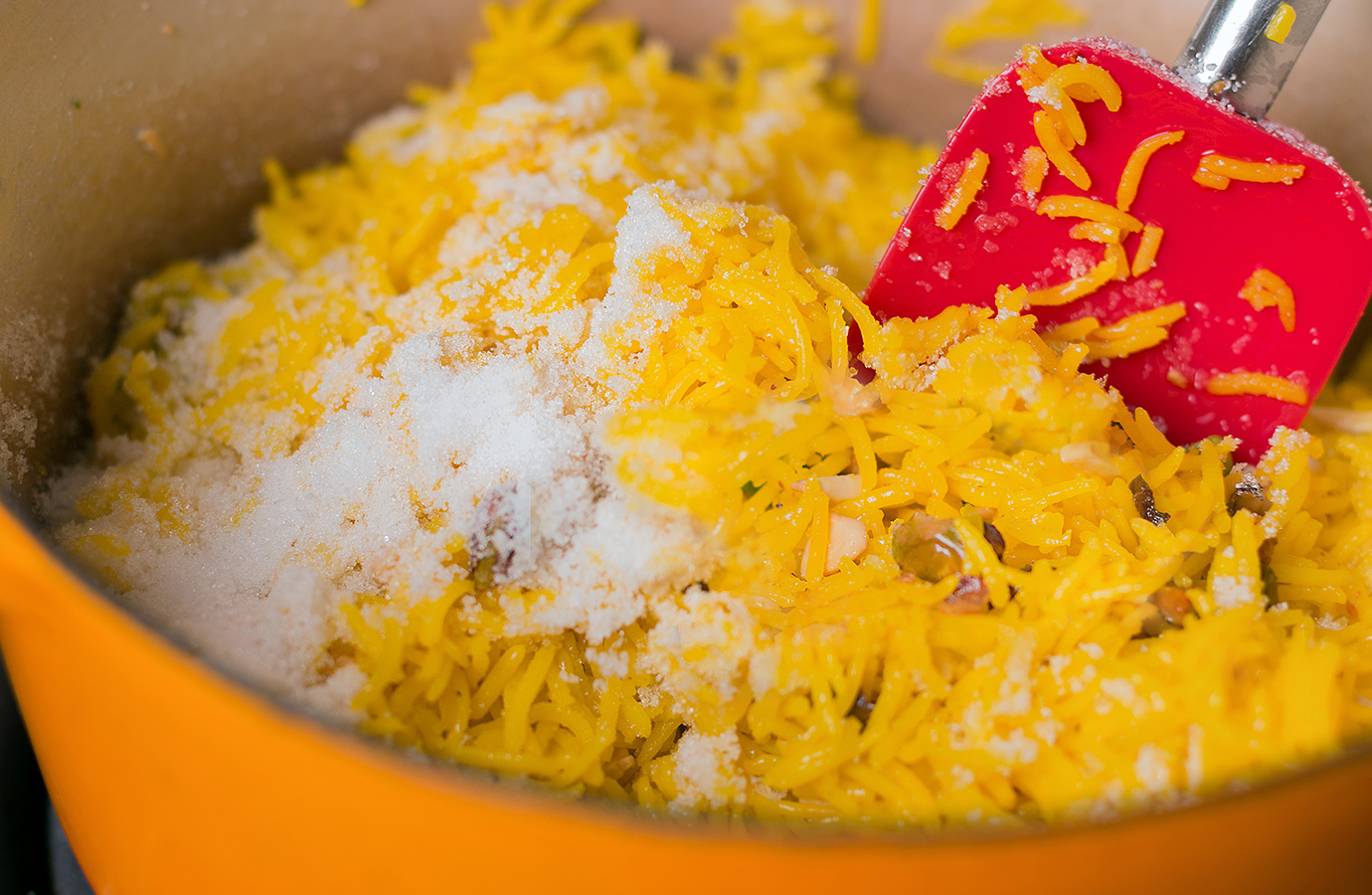
Stir in the saffron and milk mixture.
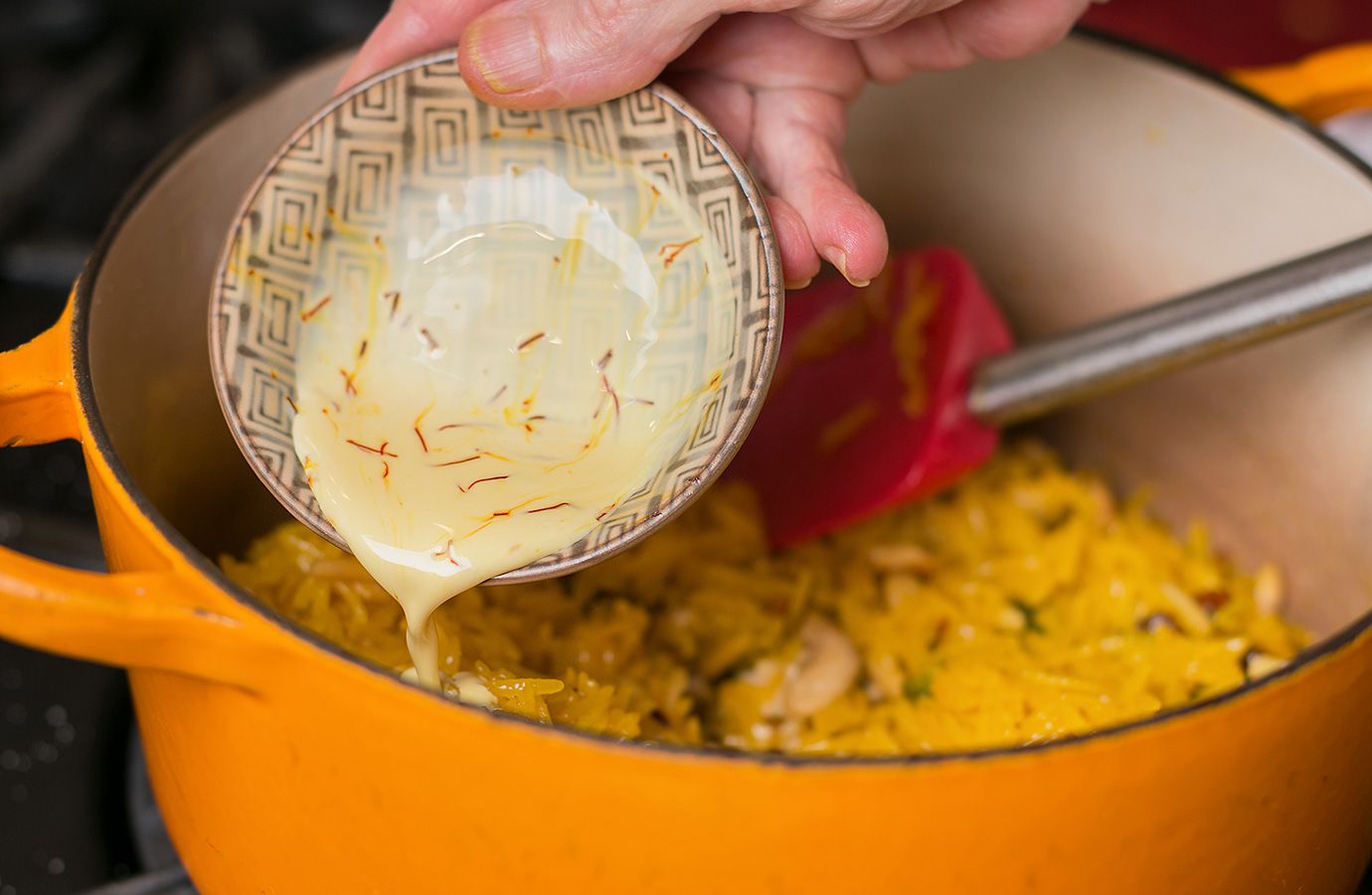
If using the mawa, add it at this point. If you do not have this ingredient on hand and want more richness, you could add 2 tablespoons of heavy cream instead.
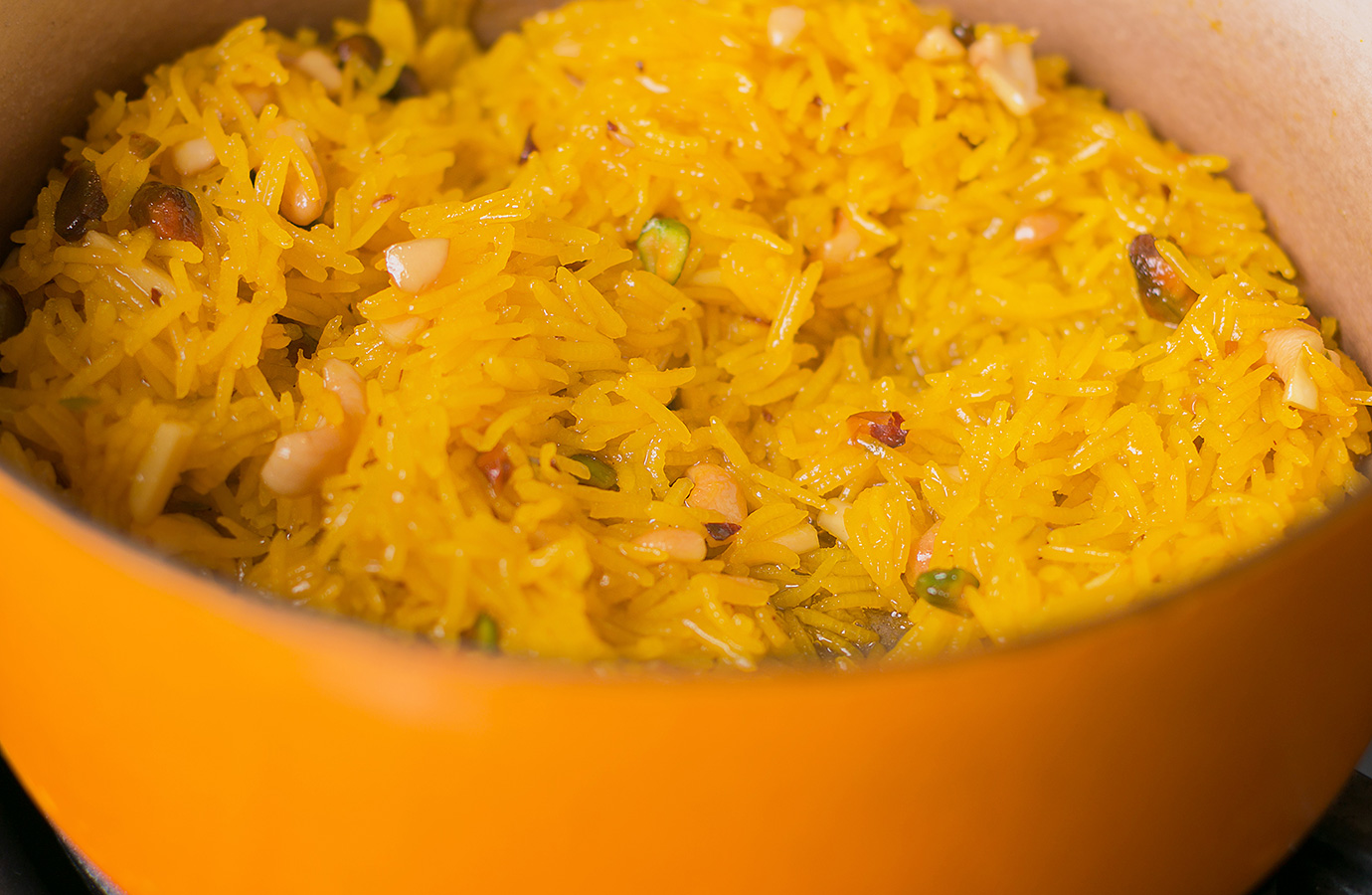
Pile the sweet rice on a platter. Pull out the cinnamon, cardamom pod and clove.
(Why the use of these aromatics at two different points? For Jahan Ara “That’s how it’s always been done!” is explanation enough.)
Traditionally, the rice was decorated with varakh, or silver leaves. This is extremely fine filigree foil made of pure silver. Today, the top of the rice is more often garnished with the reserved raw nuts and dried fruit or candied peel. The more lavish the toppings, the greater the show of hospitality.
Mawa
Mawa, also called khoya, is created by very slowly cooking milk, which evaporates the liquid, and leaves only the milk solids. Mawa adds a richness and subtle sweetness to any dessert that is not duplicated with any other ingredient. To make it, you need a heavy-bottomed pot, preferably non-stick. This is a long process. I started with a quart of whole milk and reduced it to a half cup over the course of four hours. Creating mawa is best done as a side job while you’re busy in the kitchen doing other tasks. However, you must keep a watchful eye. As soon as a skin forms on top of the simmering milk, stir it back into the liquid, scraping the bottom of the pan so it doesn’t burn. The final product can be frozen and grated as a finishing touch into desserts and curries.
Method
1. Pour the milk into a large, thick-bottomed, preferably non-stick, pot. The pot must be at least four times as large as the volume of milk to keep it from boiling over at the start of the process.
2. Bring the milk just to a boil and reduce the flame to the lowest level. The milk will froth many times. When you see this happening, use a heat-resistant spatula to stir the milk.
3. Continue simmering and stirring. A skin will often form on the surface of the milk. Keep stirring this skin back into the milk, carefully scraping the bottom of the pan. As the milk reduces, be vigilant! Keep scraping the bottom of the pan! After spending hours reducing the milk, you don’t want to snatch defeat from the jaws of victory by burning it at the end of the process.
5. When you no longer see bubbles on the surface, and the milk solids are a pale beige color, remove the pan from the heat and rake the product into an airtight container.
The mawa can also be frozen at this point and grated into dishes as needed.

